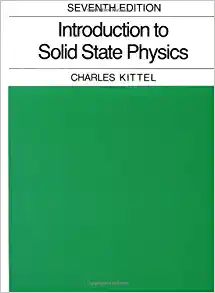Question
Exercise 1 Determining the Specific Heat Capacity of Solids you will construct a calorimeter to determine the specific heat capacity of solid materials. Procedure Note:One
Exercise 1
Determining the Specific Heat Capacity of Solids
you will construct a calorimeter to determine the specific heat capacity of solid materials.
Procedure
Note:One hour before starting this exercise, fill a large drinking glass with tap water and let it sit so it can reach room temperature.
Part 1: Constructing a Calorimeter
Note: To minimize heat exchange with the environment, you will use a well-insulated calorimeter for this experiment. Three Styrofoam cups willbuild the calorimeter - two(one inside the other) to form the base and one as a cover.
- Put on your safety gogglesand place two Styrofoam cups together such that one sits inside the other.
- Use scissorsto trim the third Styrofoam cup to a height of approximately 5 cm.
- small hole in the bottom of the 5 cm cup using a pen or pencil. See Figure 6.
Note: The hole should be small enough such that the thermometer will fit tightly in the hole. This will limit the amount of heat escaping the calorimeter and prevent the thermometer from shifting position significantly. Turn on the digital scale and select the gram function.
- Place the doubled cup on the digital scale and press the power button once to tare the scale.
- Pourapproximately 75 g of the room temperature water into the doubled cup. Record the mass to 0.01 g in Data Table 1.
- Remove the doubled cup containing the water from the scale.
- Tare the digital scale.
- Place four washers on the digital scale and record the mass to 0.01 g in Data Table 1.
- Insert the thermometer into the calorimeter base such that its tip is in the water. Record the temperature of the water to 0.1C in Data Table 1.
Note: Avoid touching the thermometer to the sides of calorimeter when measuring the temperature of the water. It may be necessary to keep the thermometer immersed in the water up to 20 seconds to obtain a stable reading.
- Using scissors, cut a 20 cm string and securely tie the 4 metal washers together.
- Place the washers in a cooking pot and fill with tap water to approximately 10 cm above the washers.
- Place the pot on a cooktopand heat the water to boiling.
Note: Avoid using a microwave for heating the water. Only use a cooktop or heat plate.
- Once boiling, reduce the heat to maintain a gentle boil for 30 minutes, stirring occasionally.
- Use the thermometer to measure the temperature of the boiling water near the washers to 0.1C, a temperature equal to that of the washers. Record the temperature as the initial temperature of the washers in Data Table 1.
Note: Avoid touching the thermometer to the sides or bottom of the pot. Avoid holding your hand directly over the steaming waterhold the thermometer to the side.
- Remove the thermometer from the hot water and place it on your work surface.
Remove the pot of boiling water from the heat source.
Usinga metal fork, quickly transfer the washers from the boiling water to the calorimeter containing the room temperature water. Quickly cover the calorimeter with the foam lid and push it down gently so the calorimeter is sealed.
Note: Avoid adding boiling water to the calorimeter. For best results, leave the string attached to the washers hanging outside of the doubled cup.
- Insert the thermometer through the hole in the calorimeter lid, positioning the tip in the water near the washers without touching them.
- Gently stir the water in the cup with the thermometer.
Note: Avoid removingthe calorimeter lid. Do not allow the thermometer to touch the sides or bottom of the cup or the washers.
- Observe the thermometer as the temperature stabilizes and record the maximum temperature reached to 0.1C as the final temperature for the water and washers in Data Table 1.
Note: You may need to slide the thermometer up slightly to see the reading. If so, periodically (every 10-15 seconds) and always return the thermometer into the water immediately afterward. Avoid removing the thermometer from the calorimeter or lifting the lid of the calorimeter when taking measurements.
- Remove the washers from the calorimeter and discard the water.
- Calculate the change in temperature T for the water and washers using the following equation:
T=TfinalTinitial=
- Record your change in temperature calculation in Data Table 1.
- Calculate the specific heat capacity of the washers using the equation for specific heat and the conservation of energy:
mmcmTm+mwcwTw=0+=0
Note: The subscript m refers to the metal object and the subscript w refers to water. Cw for water = 1.0 cal/(gC)
- Record the specific heat capacity in Data Table 2.
- Calculate the percent uncertaintyfor the specific heat of the washers using the equation:
Percent Uncertainty=cm, theorycm, expcm, theory100%Percent Uncertainty=|m, theorym, exp|m, theory100%
Note: cm, theoryvalues are located in Data Table 2.
- Record the percent uncertaintyin Data Table 2.
- Repeat step4-28 using the brass ball in place of the washers.


Step by Step Solution
There are 3 Steps involved in it
Step: 1

Get Instant Access to Expert-Tailored Solutions
See step-by-step solutions with expert insights and AI powered tools for academic success
Step: 2

Step: 3

Ace Your Homework with AI
Get the answers you need in no time with our AI-driven, step-by-step assistance
Get Started


